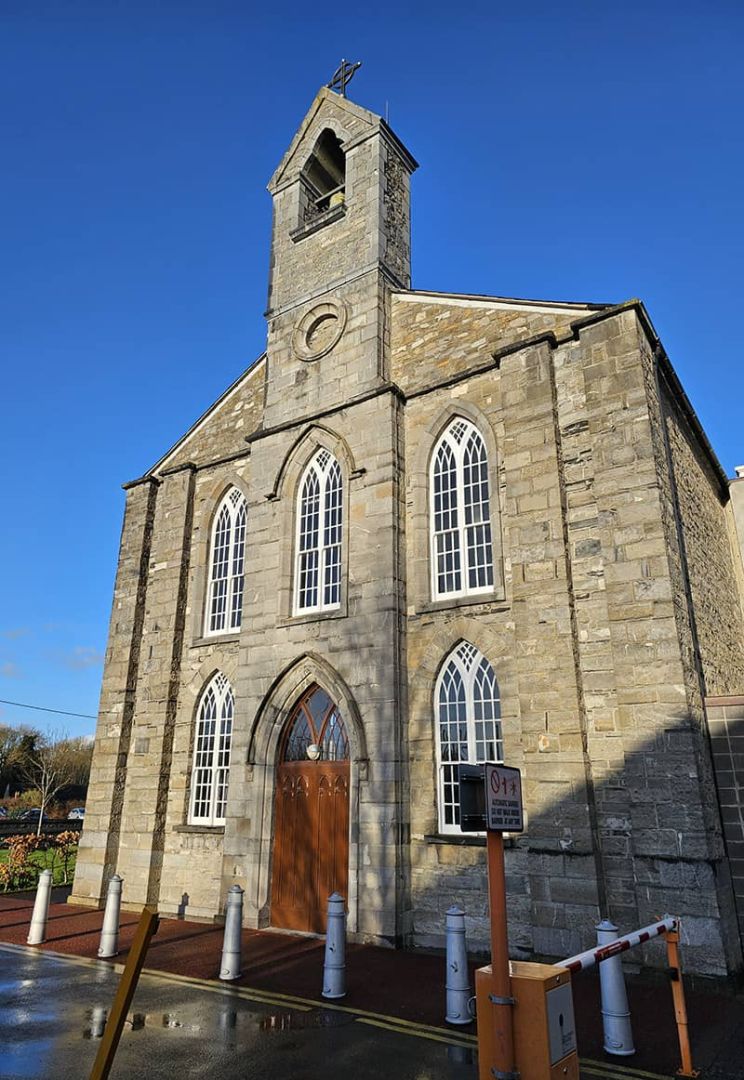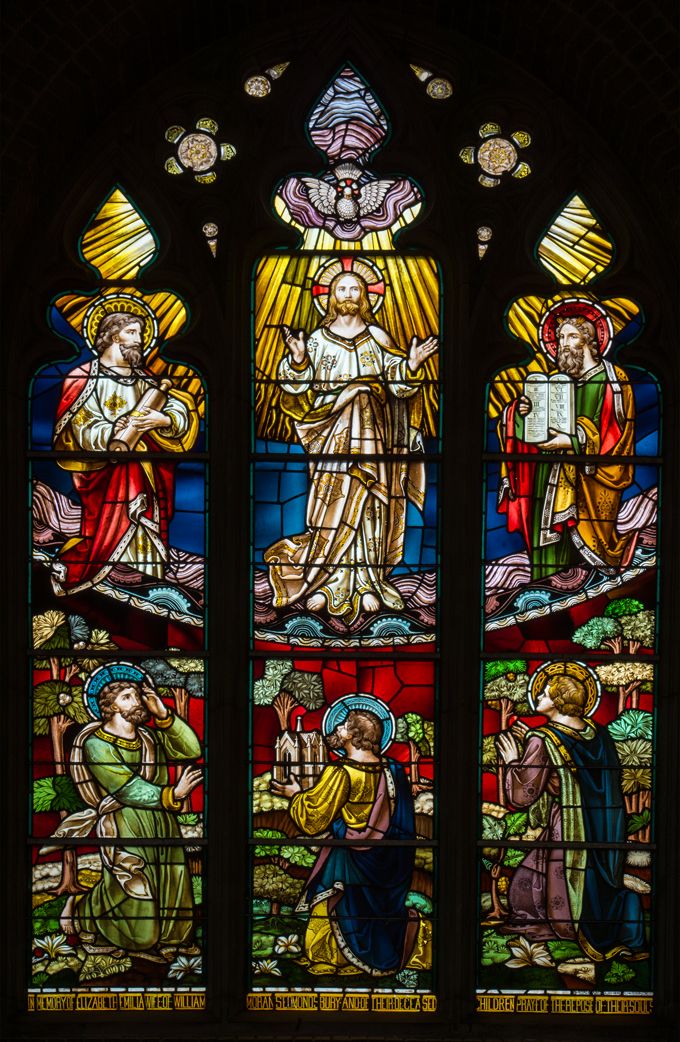
History of the Parish
The official name of the Church in Lucan is “The Church of the Nativity of the Blessed Virgin Mary”, but it is better known as St. Mary’s.
Its dedication may stem from the medieval church now in ruin in the village which was known as The Church of the Blessed Virgin Mary. Up to the days of the Reformation, Catholic services were held in this old church. Sometime after that, Catholics were given use of a wooden structure on the site of the present Garda Station.
The building of “the Chapel” – as it was then a “Chapel of Ease” to Clondalkin – began in 1835, but it wasn’t until 1840 that the roof was in place. In the meantime, Mass and other services were held within the roofless building. It is said that the great temperance priest, Fr. Matthew, preached here on the evils of alcohol before the roof was in place.
In 1953, St. Mary’s Lucan became a Parish in its own right. Fr. Edmond Brennan was inducted as the first Parish Priest. His Curate at the time was Fr. Gilmore.
Because of the growing population of Lucan it was decided to build an extension. Through the Planned Giving Campaign which started in 1968, other fundraising activities, and the sale of the ‘Priest’s Field’ (where Brookvale is now), enough money was collected. The old Church building was renovated, and an extension was completed in early 1975. The Church extension is built over the old graveyard. In order not to disturb the graves, a raft of concrete and steel was laid over the area, and the building stands on that. The headstones, which were still intact, were saved and can now be seen around the car park.
Over the subsequent years, a number of serious shortcomings were identified with the extended church including the position of the altar and tabernacle, the visual and physical disconnections between the old and the new sections of the church, a cold, spartan atmosphere, an inadequate heating system, poor acoustics and uncomfortable seating. Accordingly, a major refurbishment was embarked upon in 2005. Nick Smith was the architect. The sculptors and liturgical designers were Chris and Mark Ryan and Maree Hensey designed the tapestry and glass.
In the redesigned church the altar is carved of granite and is the focal point. Local Dublin granite has been used because of its sense of permanence and also its significance to our history of the Mass rock. The shapes and forms used have been so designed to give a feeling of spiritual uplifting and organic growth.
The Ambo is the place where the Bread of the Word is broken. When scriptures are proclaimed in the liturgy Christ himself is speaking to the faithful and we are celebrating his presence in the word. The importance of this liturgical element is emphasized in the use of stone and the symbol of the Dove has been used to represent the Holy Spirit.
The motif chosen for the Tabernacle is of the “Burning Bush”. In the book of Exodus, we read about Moses who became aware of the Lord’s presence in the burning bush, one of the great moments of our sacred history. In designing the sanctuary the architect has created a “sanctuary within a sanctuary” for the Blessed Sacrament. The burnished bronze of the tabernacle invites us to recognize that we are in a holy place.
The Baptismal Font is one piece of Dublin Granite and is symbolically placed close to the entrance to the Church reminding us of our baptism with the Church, the Body of Christ. The sculpted open bronze top allows use as a holy water font. The fish was an original Christian symbol. The letters of the Greek word for fish – ICHTHUS – give us the first letters of Jesus Christ Son of the Living God. When drawn on the sand the symbol served as a secret code for Christian believers in an era when belief put a person’s life at risk. The fish on the top are also used as a symbol of “the faithful swimming in the waters of sanctifying grace”.
The bell on the original Church was encased in stone like most Churches of that era. The architect wanted a bell tower that would fit with the old building and be visible from a distance. The cut stone for the new bell tower came from the Burren in County Clare. Some 12 – 15 tons of rock are now holding the bell in position.

Special Features
Over what remains of the old altar, is a beautiful stained glass window, the subject of which is “The Transfiguration”. This was donated by the Moran Family of St. Edmundsbury, who were ever generous to St. Mary’s.
The old Nuns Chapel, recently refurbished, is to the right of the altar. In the days before the Sisters were allowed outside the Convent, they heard daily Mass from within here. The centre ‘window’ would be opened at Communion time. A plaque on the wall beside it commemorates the time of the Presentation Sisters in Lucan.
The Presentation Convent is as much part of the Parish history as the Church itself. The story goes that the two young Colthurst brothers of Lucan House, Robert and David, were so impressed by the work of the Mercy Sisters on the battlefields of the Crimea, that they decided to build a Convent in Lucan. Robert who had converted to Catholicism, died in London at the age of 34, leaving £2,000 in his will towards the erection of the Convent. His brother David fulfilled their dream, and the building was complete in early 1867.
The Mercy Sisters of Baggot Street were offered the Convent, but declined on the grounds that the homes of Lucan were too scattered for their work of visitation. Rev. John Moore PP, approached the Presentation Sisters in Clondalkin. They came, they saw and they fell in love with Lucan. And so on the Feast of St. Joseph in March 1867, Mother Mary Conception Kennedy and some other Sisters arrived in Lucan amid a flurry of spring snow, and founded the 32nd Presentation House in Ireland.
The Sisters took charge of the Girls’ School, which was linked by a passage to the new Convent, and they also took charge of the Church. These duties and many more were carried out for the next 127 years, until the Presentation Sisters ceased parish involvement in Lucan in 1994. Thankfully they are still a prayerful presence in the Parish where the convent nowadays serves as the Mission House and welcomes sisters from all over the world.
